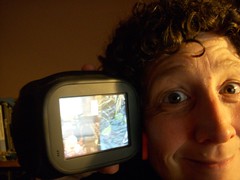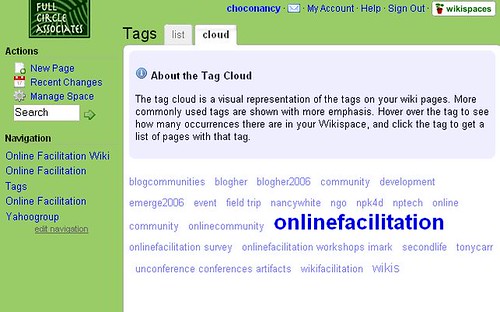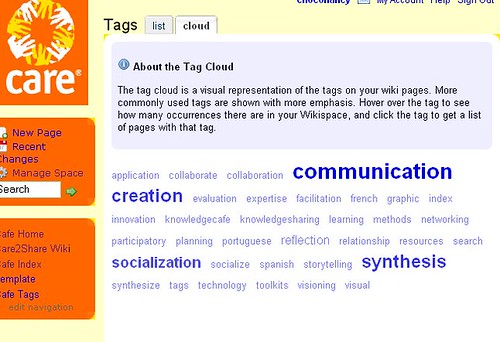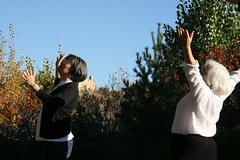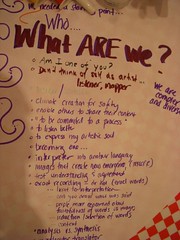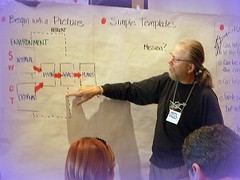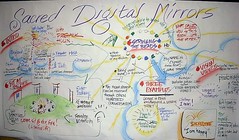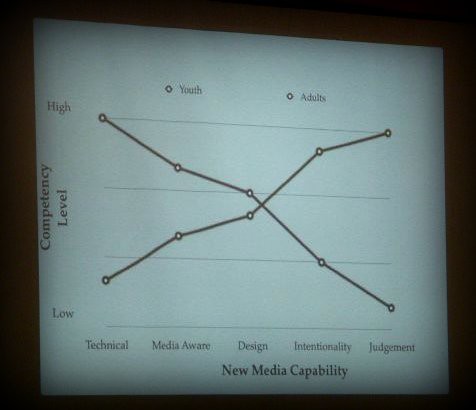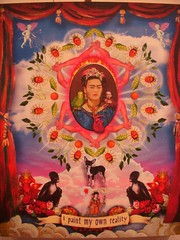Me and My Chumby
My Chumby arrived today. There is something irresistible about this little mobile wireless displayer of widgets that tickles me. I am playing with it. Literally playing.
On Twitter, we started tossing around ideas - Leonard Low, Jennifer Jones and I -- about how it might be a mobile learning device. Or a community device. Mmmm, possibility.@NancyWhite - wow a CHUMBY! I've previously blogged about whether they might be moddable for m-learning... WDYT? (leonardlow)
@NancyWhite http://tinyurl.com/29kgsu (leonardlow)
@leonardlow I was wondering the same thing. How can I use this little device for both learning and community somethingorother?
@NancyWhite Community definitely: IM or Twitter on Chumby would be easy and suitable for the small form-factor. Anything else...? Hmmmm... (leonardlow)
@leonardlow I've got twitter running on it now. I was wondering about using it as a "community indicator." Small bits of feedback aggregated
@NancyWhite Trying to think of Chumby's "lifestyle fit" to determine what apps would work well on it. Brainstorming now... :) (leonardlow)
@NancyWhite As a "home appliance" I think it would be a terrific podcast receiver - like a radio, but for podcasts. :) (leonardlow)
@NancyWhite You could "tune it" to RSS channels - news, music, learning - and it would play them sequentially - a custom mix of content. (leonardlow)
Injenuity chimes in...
@NancyWhite I'm adding my virtual Chumby to my facebook account. Do you have a real Chumby?
Jennifer D. Jones (injenuity) via web at 21:03
@leonardlow Well, the sky's the limit as long as you think of things that fit on a small screeen. So larger than Mobile, but still small.
@injenuity Yup, I have a real one. Uploading Flickr pix as we "speak!" http://tinyurl.com/2zrg46
@NancyWhite But it has to stay plugged in, right? Won't you miss it when you are away? (injenuity)
@NancyWhite thinking audio - not limited by small screen. Download, cache content locally, play it, delete it after a day (unless saved)... (leonardlow)
@NancyWhite recommend I get one to play with? :) I'm a programmer... can *create* apps. :)
leonardlow (leonardlow) via web at 21:12
@NancyWhite thinking audio - not limited by small screen. Download, cache content locally, play it, delete it after a day (unless saved)...
leonardlow (leonardlow)
@leonardlow If you are a programmer, yes. Thing is you don't "download" - it rotates widget content via wireless (I think). Small HD?
Nancy White (NancyWhite) via Snitter at 21:14
Fun!
